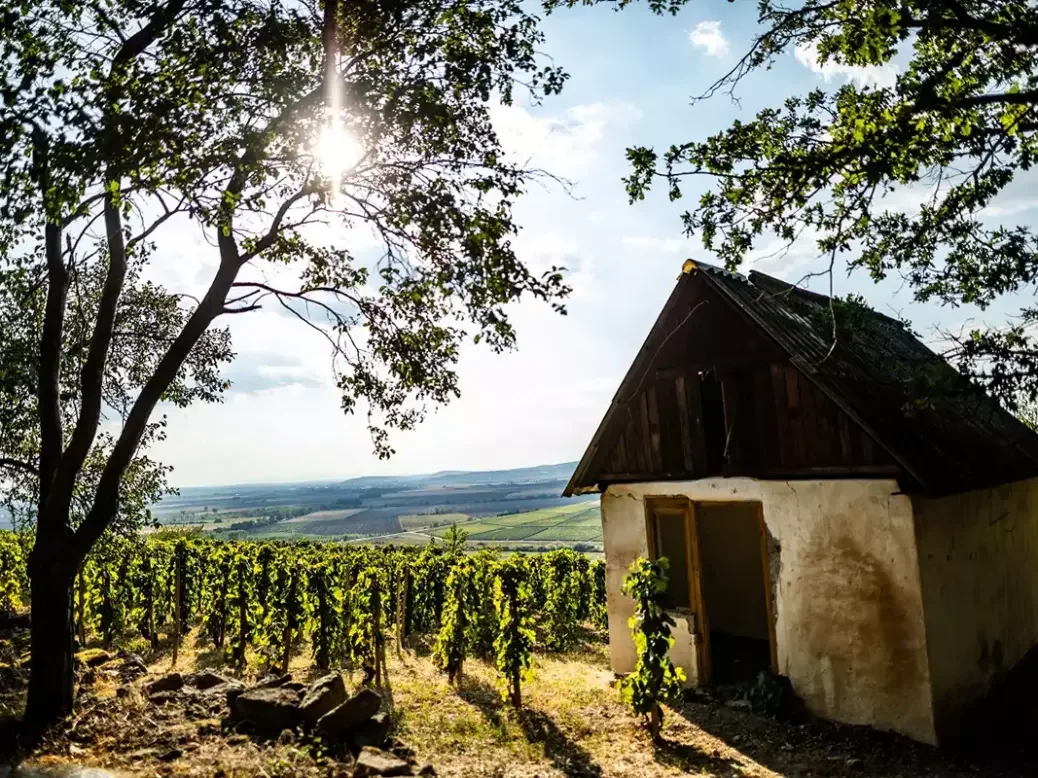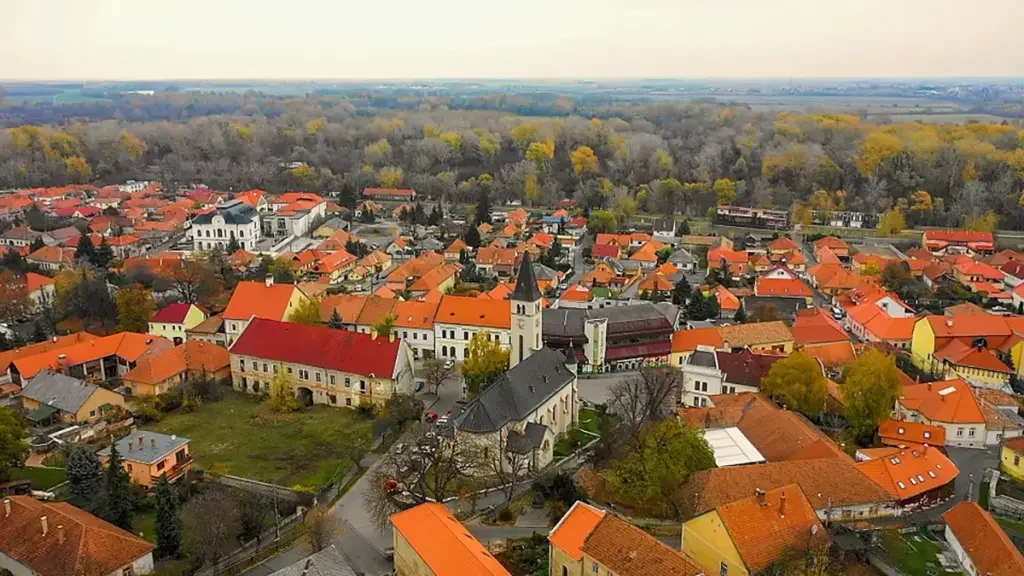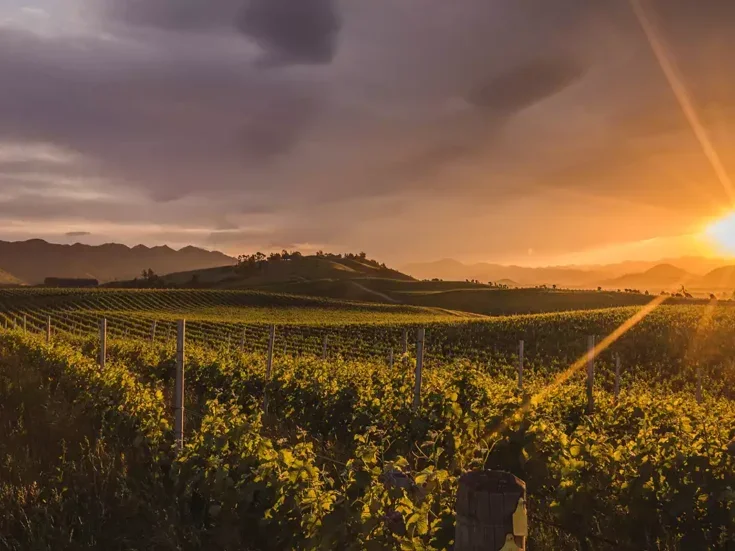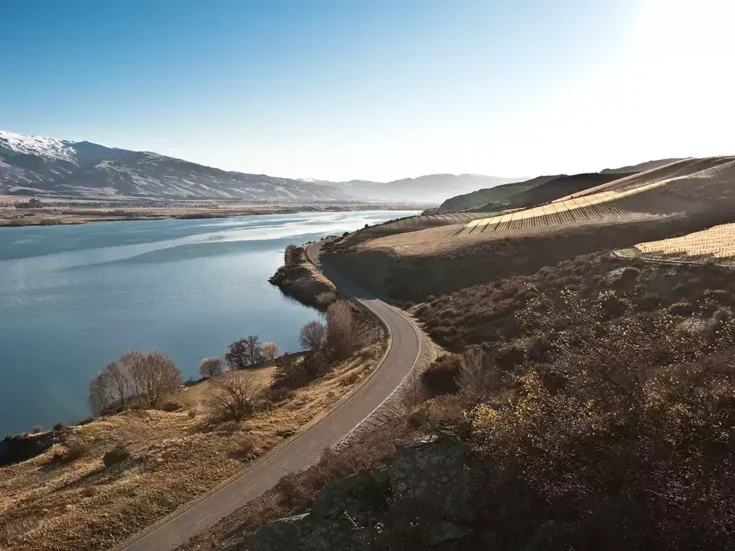
In the first of a two-part exploration of the great Hungarian wine region, Sarah Marsh MW asks how producers in Tokaj are adapting to changes in climate and fashion that have made their traditional forte, sweet wines, more difficult to produce and sell.
A storm tore across the vineyards of Tokaj. The shutters chattered. The temperature plummeted and the power cut. Dinner at Disznókő Winery continued by candlelight with any hope of writing tasting notes abandoned. There would be snow the following morning, but for the time being we were cocooned in the warm; enveloped in the honeyed richness of Aszú.
Tokaj’s producers rebuilt the region’s reputation for Aszú wine during the 1990s after the bad old days of communism when quality was forfeited for quantity. Tragically, however, sweet wines are out of sync with current tastes and among the many people I met on a recent week in Tokaj only Charlie Mount, managing director of Royal Tokaji, finds Aszú an easy sell. But Royal Tokaji benefits from the profile of founder member Hugh Johnson and, together with foreign-owned companies Tokaj-Oremus (Vega Sicilia) and Disznókő (AXA) which invested during privatization in the early 1990s, has a wide-reaching sales network. Small Hungarian family-owned businesses, however, can struggle.
Aszú wine is undoubtedly among the great wines of the world, but has a limited market not only for its style, but at the high price point. (It’s made from tiny quantities of botrytized berries, individually picked.) Moreover, the foggy conditions conducive for botrytis in Tokaj are becoming less reliable with climate change. So, in a bid for a more sustainable source of income, premium dry wines were pioneered in the 2000s. Királyudvar Estate was first out of the gates in 2000 with a wine from Uragya vineyard in Mád made by winemaker Zoltán Demeter.
Gradually dry wine began to dominate production, and it now accounts for as much as 80 percent, although much of this is low end, semi-dry wine sold for a couple of euros a bottle through local supermarkets. A smaller production, 15–20 percent, is quality dry wine. These are making an impression in foreign markets. Notwithstanding this, there is a sense of anxiety in the region about the future.
István Balassa, head viticulturist for the former state-owned wine company Grand Tokaj, dramatically forecasts the end of the wine trade in Tokaj if it cannot expand. “If we don’t change and include other varieties, I think this wine region will be dead in five years. The potential is very high but we need to sell our wine. Furmint is very good for making high-end dry wines, but they are expensive.” Balassa also makes wines under his own name for which his solution lies in using familiar international varieties including Sauvignon Blanc and Chardonnay, but since only six local varieties can be labelled as Tokaji, this approach will do nothing to promote the region. Entry-levels wines are the region’s calling card for new consumers and are surely more effective when they are made from local varieties, which have an all-important sense of place.
The significance of Furmint
Furmint is by far the most significant variety representing 64 percent of planting. Its relatively neutral character makes it an ideal conduit for terroir and its teeth-tingling acidity, cherished for balancing the sweetness of Azsú wines, has become integral to the identity of Tokaj’s dry wine. However, waiting for that acidity to diminish, can result in high ABVs. In 2021, a long, cool season which made excellent wines of intensity, vigor, and balance, many dry wines are 14%. Furmint also needs time to reach full phenolic ripeness and if yields are not kept in check it is prone to unripe phenolics. Balassa argues that low yields make it unsuitable for entry-level wine.
The answer to style and quantity issues may be found in the traditional approach of blending about a third of the second most popular variety Hárslevelű (19 percent of planting). This lightly aromatic, but not overly scented variety has a civilising effect on Furmint, although it’s increasingly popular as a standalone varietal to make dry wine. The third most-planted variety is Yellow Muscat (Sága Muskotály; 11 percent of the total), one for those who like spicy varieties. I’m not a great fan and a little goes a long way, but Hold and Hollo Dry (from Holdvölgy Winery) is an attractive example in which the three varieties are blended with a little Zeta to make an affordable and approachable wine packaged to catch the eye of younger consumers. Zeta, Kövérszőlő, and Kabar, which are planted in negligible quantities, are permitted for use in Tokaji.
Taking another approach, around 25 producers are pinning their hopes for the future on bottle-fermented sparkling wine, capitalizing on the firm acidity of Furmint. It’s early days. The results are mixed. But there’s promise.
Equally popular with producers is dry Szamorodni, an intriguing semi-botrytized and flor-aged wine; a style sommeliers go nuts for. The 2003 from Samuel Tinon (an excellent producer across different styles) shows it ages well too, but dry Szamorodni is for wine geeks and will do precious little to bring a steady flow of income into the region.
The future lies in developing the market for premium dry wine through communicating about their terroir. The knowledgeable wine consumer loves a terroir-driven wine. The other styles are useful and attractive supporting acts, but I wanted to discover more about the single vineyard wines.
On my visits some producers presented their terroir and wine as “very complicated.” Frankly that’s off putting even to hardened professionals. I prefer a straightforward approach.
Active pyramids and extinct volcanoes
The Tokaj region is made up of 27 villages scattered across a region of around 400 extinct volcanos. It is quite condensed with just 11,000ha (27,000 acres) of vineyards licensed to use the Tokaji name and 5,307ha (13,114 acres) actually cultivated. Millions of years of volcanic eruption have produced a bedrock made largely of rhyolite and andesite with a clay rich top soil of varying depth.
There is an easy-to-understand quality pyramid: regional level Tokaj, village wines, and single-vineyard wines (Düloszelekalt or Dülo).
If you visit the region you will frequently hear it proudly said that Tokaj is the oldest defined wine region dating back to 1670–74. More intriguing is the second classification of 1730, in which a list of 139 vineyards were identified by the pastor and polymath, Mátyás Bél (many of which first appeared in written records in the 1600s and were in use long before). Bél ranked these vineyards first, second, and third class and with a few tweaks since, this classification remains pretty much in tact.
The single vineyards (dülos) were a hit list for Aszú wine production, selected for their propensity for botrytis, for the quality of the wine they produced, and certainly for their popularity with the merchants trading the Aszú wine to foreign markets at the time.
There are 50 first-class vineyards, but it’s clear from tastings that some second- and third-class vineyards, which may be affected by botrytis once or twice per decade, are producing excellent dry wine. This begs the question why not create a separate vineyard classification based on terroir and dry wine?

Some of these classified vineyards were originally defined by former owners, so the boundaries were arbitrary, while others are defined by natural boundaries of gullies, forests, or ravines. Twelve, including Középhegy, straddle village boundaries. The largest, Lapis, is 145ha (360 acres), but several are fewer than 2ha (5 acres). Most vineyards are divided into small parcels owned by several growers, as in Burgundy and Piedmont, making it possible to glean a impression of the expression of terroir in some larger and more famous vineyards by tasting wines from several producers. However, this is limited to just a few since many vineyards remain partially, and often largely, uncultivated.
Tokaj is populated by 4,631 growers, many of whom sell to wineries including the vast Grand Tokaj. Should they wish to make their own wine, but have no winery, there are three winery facilities (in Bodrogkisfalud, Tállya, and Hercegkút) to the community. There are currently around 267 producers, some with fewer than 5ha (12 acres), while the larger producers have 100–150ha (250–370 acres). The smaller producers typically make about 70 percent dry wine.
On this trip I tasted from a least 40, many of whom not only have parcels in their own village, but neighboring villages. As István Szepsy Junior explained, privatization offered an opportunity for the former laboring classes, including his family which has been making wine since the 1500s, to purchase good-quality land, which before communism belonged to the aristocracy.
Within the 27 villages, three or four quickly become familiar. These have the largest area under vine, no doubt because of the quality of the terroir and the concentration of first-class growths. Fortunately, they are also the easiest to pronounce.
There are the two villages, Tokaj and Tarcal, on either side of the Tokaj hill, which have about 500ha (1,235 acres) under vine. Beyond Tarcal there is the village of Mád with 973ha (s, almost twenty percent of Tokaj’s total, while Tállya, to the north of Mád, has 750ha. I will be exploring these villages, their vineyards, and their wines, in depth in part two.






